Kharkov battle. August 1943 of the year. The liberation of Kharkov
This operation was given great importance. The front forces had three combined arms, two tank and one air army, two armies were in reserve Headquarters. In the areas of the fronts designated for the breakthrough, a high concentration of equipment and artillery was created, for which artillery, self-propelled guns and tanks were additionally transferred here.
On the German side, the defense was held by the infantry and tank armies, as well as the 14 infantry and 4 tank divisions. After the start of the operation, the German command urgently deployed reinforcements from the Bryansk Front and Mius, including the well-known divisions Totenkompf, Viking and Reich, to the area of its operation. Field Marshal Manstein commanded the troops of the South group.
Start of operation
Operation "Commander of the Rumyantsev" began on August 3 and initially was more than successful. The troops were given the task of encircling and destroying the Kharkov grouping of the enemy in order to prevent them from leaving the Dnieper.
Within five days, the troops of the Voronezh and Steppe fronts captured significant territories from the enemy. Large Wehrmacht groups were destroyed near Borisovka and Tomarovka, and Belgorod and Bogodukhov were liberated on August 5. The point of attack was the 1 and 5 I tank armies, which were supposed to create the conditions for encircling and destroying the Kharkov group.
The Soviet tankers on August 6 completed the elimination of the enemy in the Tomarovsky Cauldron and the 5-I tank army moved to Zolochev, which, as a result of a night attack, managed to capture August 9. After that, the army was withdrawn to the reserve and subordinated to the commander of the Steppe Front.
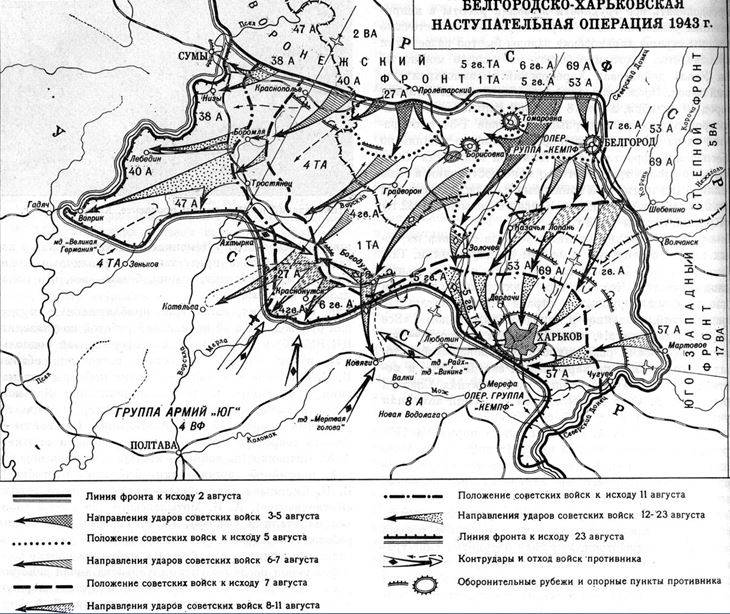
The troops continued to reach Kharkov through Bogodukhov and Akhtyrka. At the same time, units of the South and South-Western Fronts launched offensive operations in the Donbas, moving towards the Voronezh Front. This did not allow the Germans to transfer reinforcements to Kharkov, and on August 10 the Kharkov-Poltava railway was taken under control.
With the beginning of the Soviet offensive, Field Marshal Manstein, based on the experience of previous battles near Kharkov, did not believe in the ability of the Steppe Front to carry out large-scale operations and took measures to strengthen the defense, but the Wehrmacht troops were retreating. Most of all, he was afraid of an attack not from the northern direction, but the attack of the 57 Army of the South-Western Front south of Kharkov.
By August 11, the 53-I, 69-I and 7-I armies of the Steppe Front came close to the external Kharkov defensive contour, and the 57-I army, having forced the Seversky Donets, captured Chuguev on August 11 and from the east and southeast came to the approaches to To Kharkov. At this time, the troops of the Voronezh Front advanced even further south and southwest, creating the possibility of deep coverage of the German group in the Kharkov region. The German command also recognized the special importance of the defense of the Kharkov industrial region and Hitler demanded that Army Group South retain Kharkov in any circumstances.
The command of Army Group South, concentrating three tank divisions south of Bogodukhov, launched a counterattack in the area of Bogodukhov and Akhtyrka on the 12 Army and the left flank of the 1 Army on August 6, striving to cut off and defeat the 1 Tank Army and take control of the railway Kharkov - Poltava. However, the Wehrmacht only succeeded in crowding out the Soviet units at 3-4 km. The 1-I Panzer Army continued to control the Kharkov-Poltava railway, and on 13 on August the 6-I Guards Army, developing the offensive, advanced south to 10 km and liberated 16 settlements.
Only on 14 of August did the enemy tank divisions succeed in squeezing out the weak formations of the 1 Tank and 6 Armies and the 16 of August and again take control of the Kharkov-Poltava railway. The 5 Tank Army was thrown into the threatened direction and the advance of the enemy 17 on August was suspended, as a result the Germans were unable to stop the Soviet offensive.
The German command in the current situation is beginning to realize that it is not possible to keep Kharkov and the Left Bank, and Manstein decides to phase out the Dnieper with the containment of Soviet troops on the intermediate defense lines.
The troops of the Steppe Front on 13 of August, having overcome the stubborn resistance of the enemy, break through the external defensive contour located 8 – 14 km from Kharkov, and by the end of August 17 engage in fighting on the northern outskirts of the city. The troops of the 53 Army on 18 of August started fighting for the forest on the northwestern outskirts of the city and on August 19 they knocked out the Germans from there.
The troops of the Steppe Front had a chance to surround the Kharkov garrison of 18 on August 1943 of the year and disrupt Manstein’s plans, but the Germans strengthened this direction, part of the Reich tank and grenadier division entered the village of Korotich and, with the support of artillery, halted the advance of the 28 rifle division and 1 mechanized corps.
The Germans decided to launch a counterattack on the advancing Soviet troops from the west, from the Akhtyrka region in the direction of Bogodukhov, intending to cut off and defeat the advance forces of the 27 Army and two tank corps. For these purposes, they formed a group of the Great Germany motorized division, the Dead Head tank division, the 10 motorized division, and the units of the 7, 11 and 19 tank divisions.
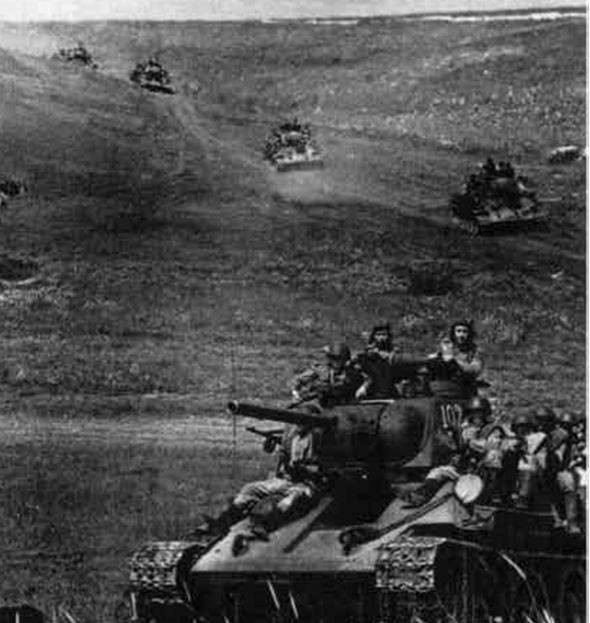
After powerful artillery training and raids aviation On the morning of August 18, Wehrmacht troops struck and, using their numerical superiority in tanks, managed to advance on the first day in a strip of the 27th Army in a narrow section of the front to a depth of 24 km. However, the enemy failed to develop a counterattack. The troops of the right wing of the Voronezh Front as part of the 38th, 40th and 47th armies, successfully developing the offensive, hung from the north over the Akhtyr group of Germans. By the end of August 20, the 40th and 47th armies approached Akhtyrka from the north and north-west, deeply covering the left flank of the advancing Wehrmacht troops, inflicting a counterattack. The advance of German tanks was finally stopped and the Wehrmacht command ordered the transition to defense.
Unfavorable for the German command, the situation was developing south of Kharkov. Starting an offensive in mid-August, the troops of the Southwestern and Southern Fronts broke through the defense along the Seversky Donets and Mius and moved part of the forces south of Kharkov, and the main forces in the central regions of Donbass.
The capture of Kharkov
On August 18, the 57 Army of the South-Western Front resumed its offensive, covering Kharkov from the south. To strengthen this direction on August 20, two corps of the 5 Tank Army were transferred to this area, and the third corps remained with Bogodukhov.
Having prepared defensive positions on the Uda River, the Germans in the late evening of August 22 began a planned withdrawal of troops from Kharkov, undermining and burning everything that they could not take out. On August 23, troops of the Steppe Front broke into an enemy-free city, occupying the northern, eastern, and central parts of the city. The Germans held the southern and southwestern parts of the city and, having fixed themselves on the right bank of the Uda River in the area of New Bavaria, the Osnova railway station and further down to the airport, they fiercely resisted. The whole city was shot through by German artillery and mortars, and aircraft delivered air strikes.
The commander of the Steppe Front, Konev, on 21 of August, ordered the 5 Tank Army to launch an offensive on Korotich-Babai with the aim of encircling the enemy’s Kharkov group from the south with the subsequent capture of the ferries on the Merefa River. The Soviet troops managed to advance only a kilometer 1 and even take control of the village, but as a result of the counterattack of the Reich division and a fierce tank battle, they were again knocked out and partially surrounded. This counterattack of the German troops was not a means of turning the tide, the Reich division simply held back the Soviet troops, giving the opportunity to retreat to the Kharkov group.
By the end of August 23, the commander of the Steppe Front could stop the meaningless offensive at Korotich and Pesochin. But he did not do this, because he had already reported to Stalin about the capture of Kharkov and Moscow had saluted in the evening for the liberation of the city. And when he realized that the Germans were not going to completely leave the city, they fortified themselves on a pre-prepared line along the Uda River, gave the command of the 5 Army and 53 Army to attack Korotich, Merefa and Buda in order to encircle the German troops, for the southwestern part of Kharkov, and drove there the last reserves.
Fights near Korotich
The Germans did not intend to leave this planned defensive line, and in the following days after the capture of Kharkov, fierce tank battles unfolded near Korotich. In which the Soviet troops encountered unusually stubborn resistance from the German tank and grenadier divisions, they suffered enormous losses and did not fulfill the task assigned to them.
The enemy organized deeply echeloned anti-tank defenses on the heights around Korotich, powerful anti-tank positions were equipped at all the dominant heights, and the mobile tank groups, depending on the situation and the need, provided a high density of fire in a particular area. The Uda River became a serious obstacle for the Soviet tankers, its banks were swamped and mined by the Germans, and the bridges were destroyed. In addition, the Germans from the dominant heights shot almost the entire river valley.
Tankers of the 5-th Panzer Army began to force the Uda River on August 21, under heavy shelling, they themselves had to look for crossing points and immediately enter the battle. As a result, 17 T-34 tanks were lost, they exploded in mines and got stuck in a swamp. The remaining tanks of the brigade could not cross the river. The attempt of infantry units to cross without tank support was thwarted by heavy fire of the Germans.
The next day, attempts were made by groups of tanks to break through to the Kharkov-Merefa-Krasnograd highway, but parts of the tank-grenadier regiment consisting of two companies of Panther tanks advanced towards the Soviet tankers. A counter tank battle took place, as a result of which we suffered serious losses. According to the recollections of German officers on the first day of fighting in the 5-th tank army, more than a hundred tanks were shot down.
On the morning of August 23, units of the 5 Tank Army captured the southern outskirts of Korotich, the northern outskirts remained in the hands of the enemy, and the railroad track could not be crossed, since all approaches to it were mined.
The general attack undertaken that day involving more than 50 tanks and infantry, the number before the division, was repulsed by the Germans and by midnight the Soviet troops were knocked out of Korotich. Only 78 T-34 and 25 T-70 tanks remained in the units.
All attempts to take Korotych on 24 of August were unsuccessful. The enemy strengthened on the southern part of the embankment of the Kharkov - Poltava railway and pulled into the village an infantry battalion, 20 tanks and anti-tank guns from the SS Viking tank and grenadier division.
Three attempts to capture Korotych on 25 in August with the strong support of artillery were also unsuccessful, T-34 tanks were shot from long range by German Tigers and Panthers. Every day, the 5 I Panzer Army was tasked with attacking Babai and Merefa, but even the farm of the Commune and Korotich was unable to capture it.
On the night of August 25 on August 26, the enemy, having suffered significant losses at a strong point at the Commune farm, withdrew his troops from there. Attempts by the 5-th Guards Tank Army of 27 on August to attack Korotich and Rai-Elenovka failed again.
Only 5 tanks, less than 28% artillery and 50% motorized infantry remained in the 50th Panzer Army on August 10. While the Soviet troops unsuccessfully tried to take Korotich, the Germans created a new defensive bridgehead along the Mzha River and on the night of August 29 issued an order to retreat, leaving the rear guard.
At night from 28 to 29 on August, Soviet troops launched an offensive on Rai-Elenovka, Korotich, Kommunar, Stary Lyubotin, Budy and, without meeting any serious resistance, took control of them.
At dawn 29 in August, German infantry of up to a battalion, with the support of tanks, broke into Kharkov and easily advanced almost to the city center. To eliminate the breakthrough, tanks and anti-tank artillery were pulled, which completely destroyed the German group. Then it became obvious that the German “sortie” to Kharkov was a distracting maneuver to ensure the retreat of the Germans from its suburbs.
As a result of the monthly battles for Kharkov, the Steppe Front was unable to encircle and destroy the Kharkov group of Germans, it managed to withdraw to the prepared intermediate line of defense along the Mzha River, the 1-I Panzer Army lost almost 900 tanks, the 5-I Panzer Army, storming the heights near the village of Korotich , lost more than 550 tanks, and six days after the capture of Kharkov, the Steppe Front lost almost 35000 people killed and wounded. These are the disappointing results of the fourth attempt to liberate Kharkov.
After the Germans were completely expelled from Kharkov, the Soviet command was finally able to hold a rally on August 30 on the occasion of the liberation of the city, although to this day 23 August is considered the official date for the liberation of Kharkov and is celebrated as city day.
Returning to all the vicissitudes of the Kharkiv battle, beginning with the forced surrender of the city without a fight in October 1941, unsuccessful and tragic attempts to free it in January 1942, May 1942 and February 1943, it should be noted that the city has a reputation for “the cursed place of the Red Army”. Despite the courage and heroism of his defenders and liberators, because of the incompetent leadership and misses of the high command, catastrophic losses in people and equipment were suffered here and the final liberation of the city was not without satisfaction of the ambitions of the command, for which thousands of lives were paid.
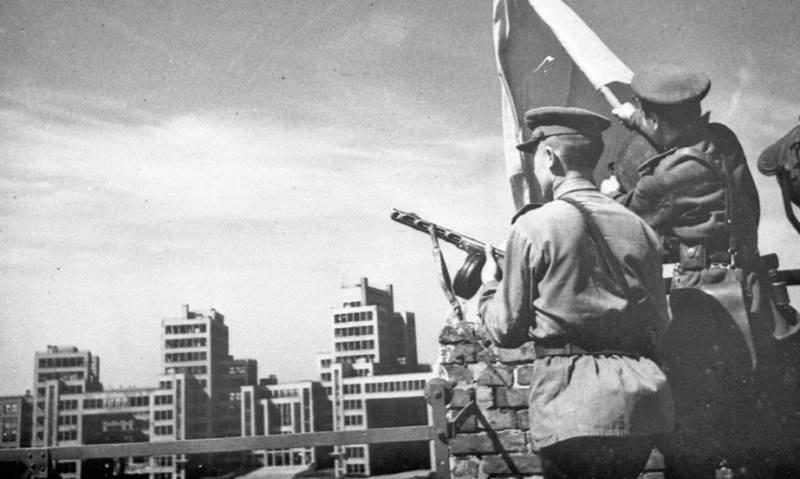
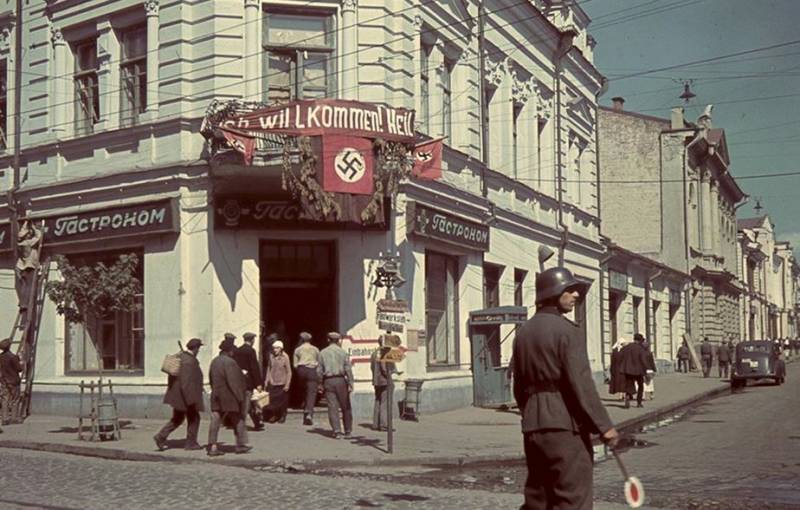
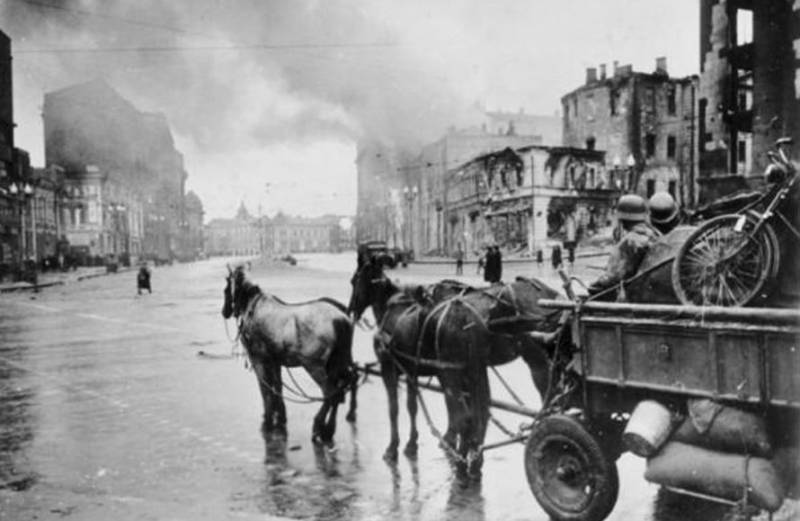
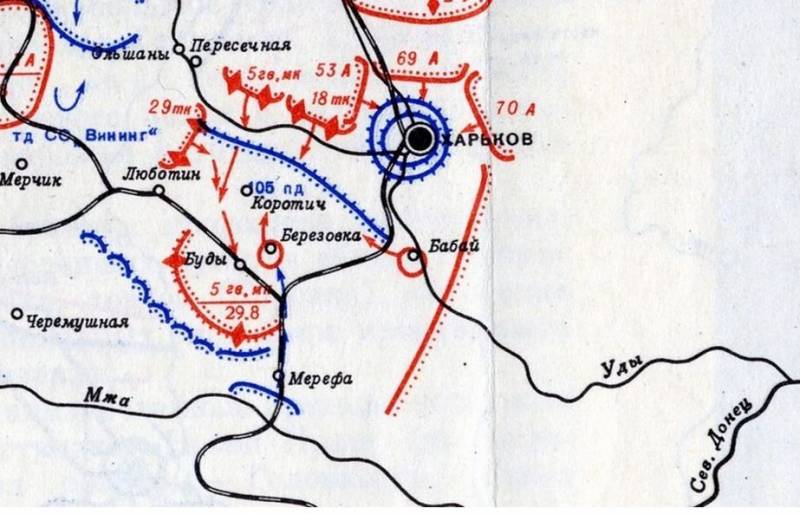
Information